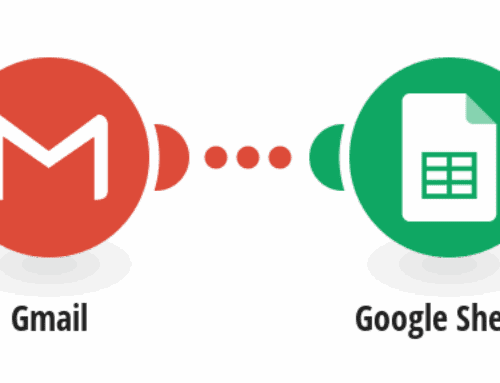Integrating GitHub Issues with Ryver Chat
In today’s fast-paced digital world, keeping all your project communications in one place can be a lifesaver. With numerous tools available, knowing how to connect them efficiently is crucial. In this article, we’ll dive deep into how you can integrate GitHub Issues with Ryver Chat to streamline your project management and enhance team collaboration.
Understanding the Basics
What is GitHub?
GitHub is a platform that hosts repositories, offering developers a collaborative environment to work on code. It provides features like issue tracking, version control, and project management tools. With millions of users worldwide, GitHub has become synonymous with open-source development and agile methodologies.
Issues on GitHub allow teams to track bugs, discuss ideas, and bring tasks to completion efficiently. But managing these issues alongside other communication tools can become overwhelming. That’s where integration comes in handy.
Introduction to Ryver
Ryver is a team communication and collaboration tool that combines chat, task management, and file sharing. Think of it as an all-in-one workspace that keeps your team aligned and informed. By integrating Ryver with other tools, you can create a seamless information flow.
While Ryver excels in communication, combining its strengths with GitHub’s issue tracking capabilities can significantly boost your team’s productivity and transparency.
Why Integrate GitHub and Ryver?
The Benefits of Integration
Integrating GitHub with Ryver allows for real-time updates and notifications. Imagine being instantly notified in your team chat every time there’s a new issue or update on GitHub. This integration ensures nothing slips through the cracks, saving your team precious time.
Moreover, having all your information centralized means your team can focus on problem-solving instead of toggling between apps. The integration not only enhances efficiency but also fosters a collaborative work environment.
Boosting Team Collaboration
A streamlined workflow encourages teamwork. When everyone is on the same page, projects move faster, and issues get resolved quicker. By having GitHub issues posted in Ryver, discussions about specific problems can happen in real-time, involving the right people at the right time.
This improved communication leads to better decision-making and problem-solving, allowing your team to operate at its full potential without unnecessary interruptions or misunderstandings.
Steps to Set Up the Integration
Preparing Your GitHub and Ryver Accounts
Before you start setting up the integration, ensure that your GitHub repository and Ryver account are ready. Make sure all necessary permissions are granted in both platforms to allow seamless data transfer. Having admin rights will facilitate the setup process.
It’s always a good idea to review your channels and conversations’ structure on Ryver. This setup preparation helps in deciding where exactly you’d like the GitHub issue updates to post, making the communication relevant to your team members.
Connecting GitHub to Ryver
Using an automation service like Make (formerly Integromat) simplifies the connection process. With pre-built templates, you can set up the integration in a few clicks. Log into your Make account, search for the GitHub to Ryver template, and follow the wizard to establish the connection.
Once connected, you can customize which events trigger notifications in Ryver, such as new issues or comments. Tailoring these settings ensures your team receives only the most pertinent updates, helping keep the focus on essential tasks.
Troubleshooting Common Issues
Handling Integration Challenges
Like any tech setup, integrations can hit snags. Common issues include permission errors or misconfigurations. Double-checking API keys and access rights usually resolves these problems swiftly. Ensure that the tokens used have sufficient permissions for both GitHub and Ryver.
If the issues persist, consulting the Make documentation or reaching their support can provide solutions. Often, a step-by-step retracing of the setup process unveils overlooked details that need adjustment.
Keeping the Integration Running Smoothly
Once the integration is up and running, it’s vital to maintain its smooth operation. Regularly check for updates on both GitHub and Ryver, as software changes can impact the integration’s functionality. Staying updated minimizes service disruption risks.
It’s also beneficial to gather feedback from your team. They might notice glitches or suggest improvements that could further streamline the process, ensuring the integration continues to facilitate rather than hinder your operations.
Conclusion
Integrating GitHub issues with Ryver chat can transform the way your team collaborates. By amalgamating the robust project management features of GitHub with Ryver’s excellent communication capabilities, you create an efficient system that supports swift resolution of issues and enhances productivity.
As technology evolves, embracing these integrations not only keeps your team aligned with industry standards but also sets the stage for future innovations. Practicing these integrations is not just about improving efficiency; it’s about creating a collaborative culture that thrives on effective communication and teamwork.
Frequently Asked Questions
Can I choose which GitHub repositories to link to Ryver?
Yes, you can select specific repositories when setting up the integration. This allows you to control which project updates are shared with your team to avoid cluttering your Ryver workspace.
Is there a limit to the number of GitHub issues that can be posted in Ryver?
No, there isn’t a strict limit. However, for optimal performance, it’s advisable to filter notifications to the most critical issues to prevent overwhelming your Ryver channels with too much information.
Do I need coding skills to set up this integration?
No coding skills are required. The integration process uses user-friendly interfaces like Make (formerly Integromat), which provides guided steps to connect GitHub and Ryver efficiently.
How secure is the integration between GitHub and Ryver?
The security of your integration relies on the permissions and keys you use during setup. Always ensure you’re using secure, authorized tokens and have restricted access to essential personnel only.
What happens if the integration stops working unexpectedly?
If the integration fails, first check your API keys and permissions. Retrying the setup or consulting the documentation of the integration service, like Make, can help resolve the issue.









